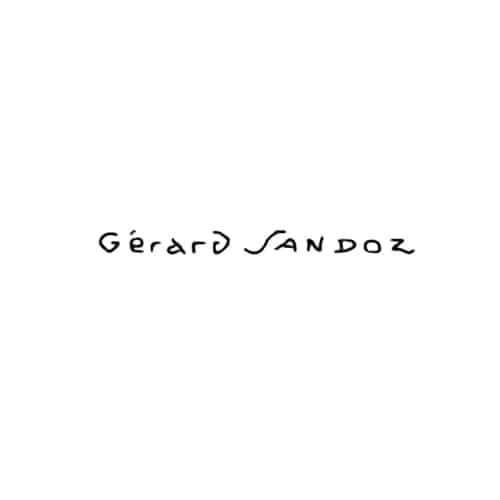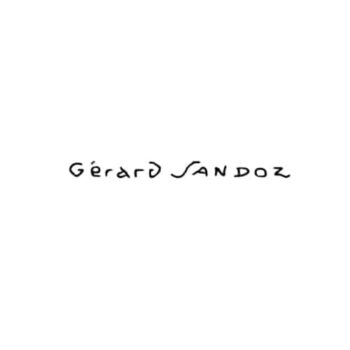(1902-1995)
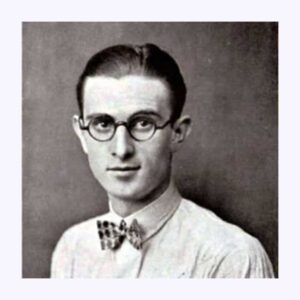
Gérard Sandoz came from a long-established line of clockmakers and jewelers. His grandfather, Gustave Sandoz, opened a shop in Paris in 1861 at the Palais Royal. Nearby you would find Boucheron and Fontana. Gustave founded the Société d’Encouragement à l’Art et à l’Industrie along with Gustave Larroumet. Their mission was “The development of the arts applied to decoration and industry by the collaboration of the State and private initiatives, and the renewal models of the art industries through the rational cooperation of the artist, the industrialist, the publisher, the craftsman, the art worker.” He also founded the Foire de Paris, the largest general fair in Europe to this day. His son, Gustave-Roger (Gérard’s father), moved the firm to the rue Royale and, as vice-president of the French committee for exhibitions and Commander of the Légion d’Honneur, was a prominent promoter of the 1925 Exposition Internationale des Arts Decoratifs et Industriels Modernes.
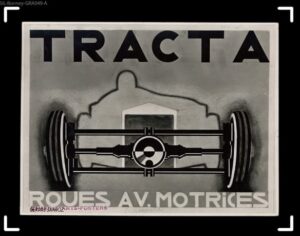
Bonney, Therese. 1925. Therese Bonney Photographs, 1925-1937. Smithsonian Libraries.
As a youth, Gérard studied at the prestigious boarding school, École des Roches. Furthering his education, he took lessons in design at the Chambre Syndicale de la Bijouterie, Joaillerie, Ovfèvrerie and studied with famed sculptor and Art Nouveau medalist, Louis Bottée. To round things out he trained with his uncle, Paul Follot, as an interior designer. In 1920 at the tender age of eighteen, Gérard joined the firm and at 19 he married Juliette Vuillaume. Gérard noted for his charming personality, led a thoroughly full and fabulously modern life of excess fun. Inspiration for the various art forms he would create came from the modern, machine-age world he lived in, taking his cues from architecture, automobiles, and the jazz-age aesthetic forming around him.
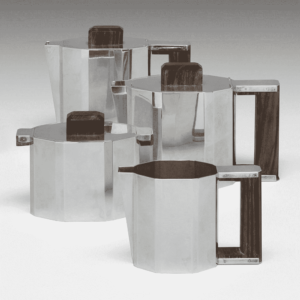
Photo Courtesy of Christie’s.
A member of the Union des Artistes Moderns (UAM) from its inception Gérard exemplified their ideals. His preference was for simple forms and geometric lines bare of any superfluous frills and frivolity. Descriptions of his work include words like Cubist, Bold, Chunky, and Sculptural. Preferring to work with contrasting colors such as coral and onyx, the resulting creations were bold. It is interesting to note that he was color blind and wonder what effect that had on his material choices and contrast preferences. While he didn’t actually eschew the use of diamonds, he preferred them as accents to his bolder semiprecious gem choices and colored gold combinations. Red and black lacquer figured heavily in his designs, sometimes augmented with the addition of eggshells adding a mosaic-like effect. Niello was also a frequent medium he employed to great results on silver with graphic designs.
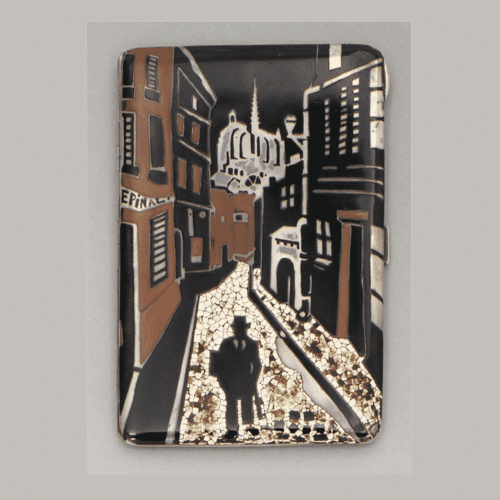
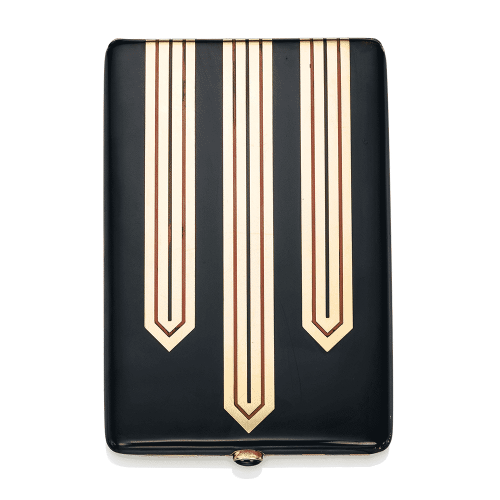
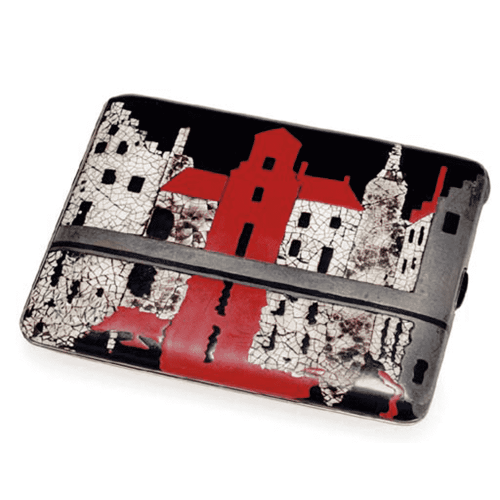
Gérard exhibited his jewelry in his father’s showcase at the 1925 Exposition and his flatware and tea services in the Ambassade Française pavilion of the Société des Artistes Décorateurs, and was rewarded with two awards. He was an avid poster designer creating designs for advertising automobiles, sports events, and the like. Painting was also a passion for this versatile artist.
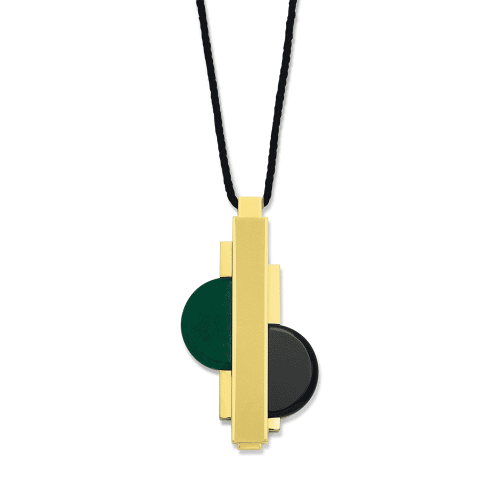
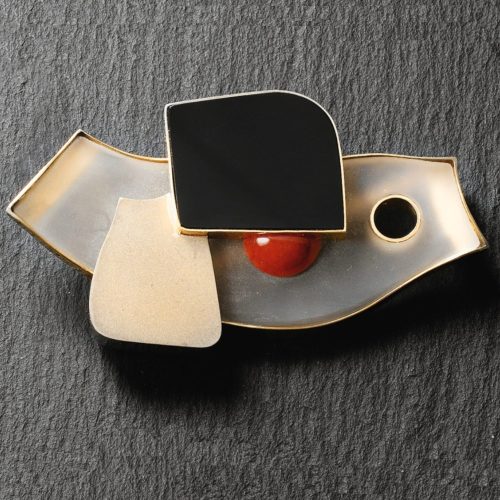
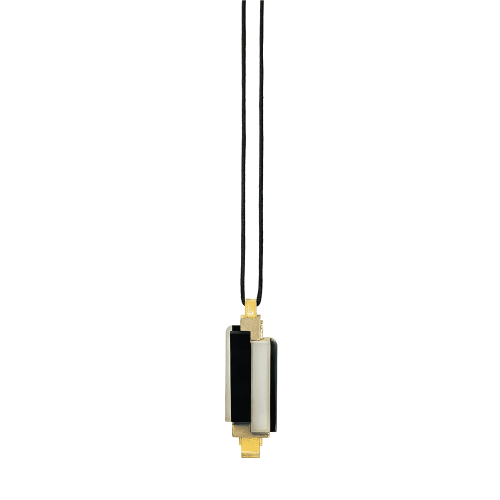

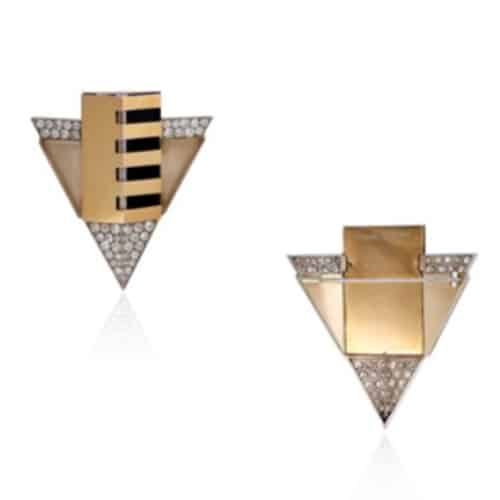
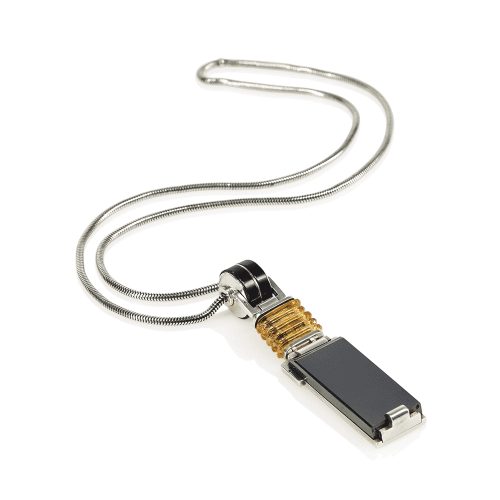
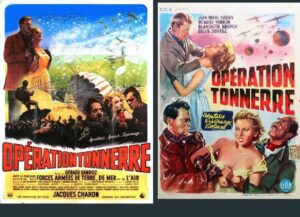
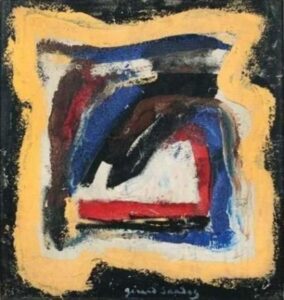
Photo Courtesy of Findartinfo.com.
The firm lost important clientele following the Russian Revolution and economic woes seemed to plague the business. Gustave-Roger understood that his son was no businessman and he decided to sell the business to Georges Lenfant, the workshop they frequently used. Gérard remained as the artistic director, but this did not last long (Gérard was already gone when the company was dissolved in 1938) he was soon off on a new passion as a filmmaker. In 1934 he founded the Grand Prix du Cinéma Français awarded each year until 1984. He dabbled at this and that, eventually choosing to paint. His style evolved, eventually mimicking his early jewelry designs, resulting in another limited attempt at jewelry design in 1985 and a small public showing. He was penniless at the time of his death in 1995.
Maker's Marks & Timeline
(1902-1995)
e.1861: Gustave Sandoz, opened a shop in Paris
- Gustave founded the Société d’Encouragement à l’Art et à l’Industrie along with Gustave Larroumet
- He also founded the Foire de Paris
- Gustave-Roger (Gérard’s father), moved the firm to the rue Royale
- Gérard studied at the prestigious boarding school, École des Roches
c.1920: Gérard joined the firm
- Member of the Union des Artistes Moderns (UAM)
Gustave-Roger sold the business to Georges Lenfant
c.1934: Gérard founded the Grand Prix du Cinéma Français
1995: Gérard died
Sources
- Mouillefarine, Laurence and Possémé, Évelyne. Art Deco Jewelry: Modernist Masterworks and their Makers. New York, NY: Thames & Hudson, 2009.
